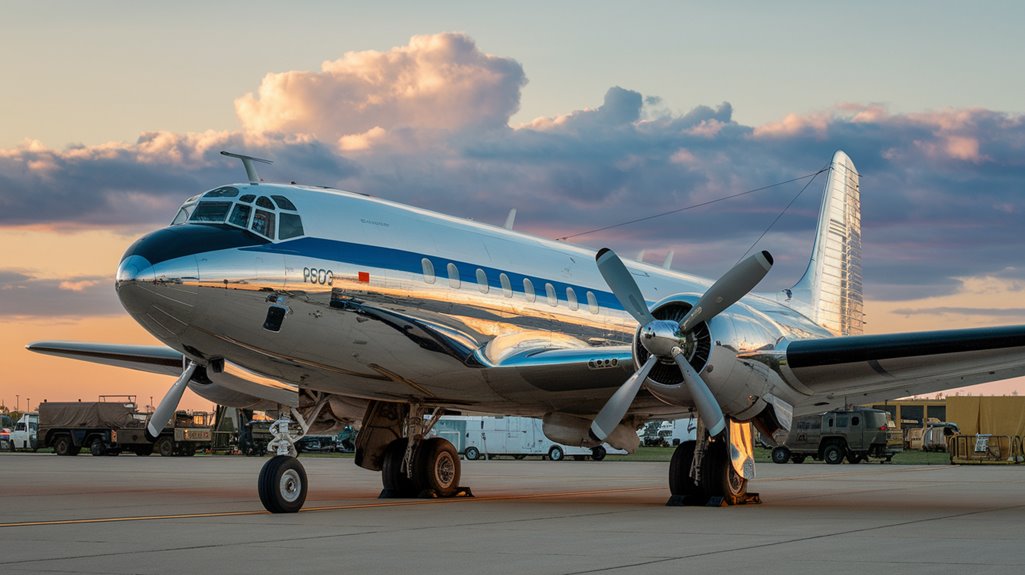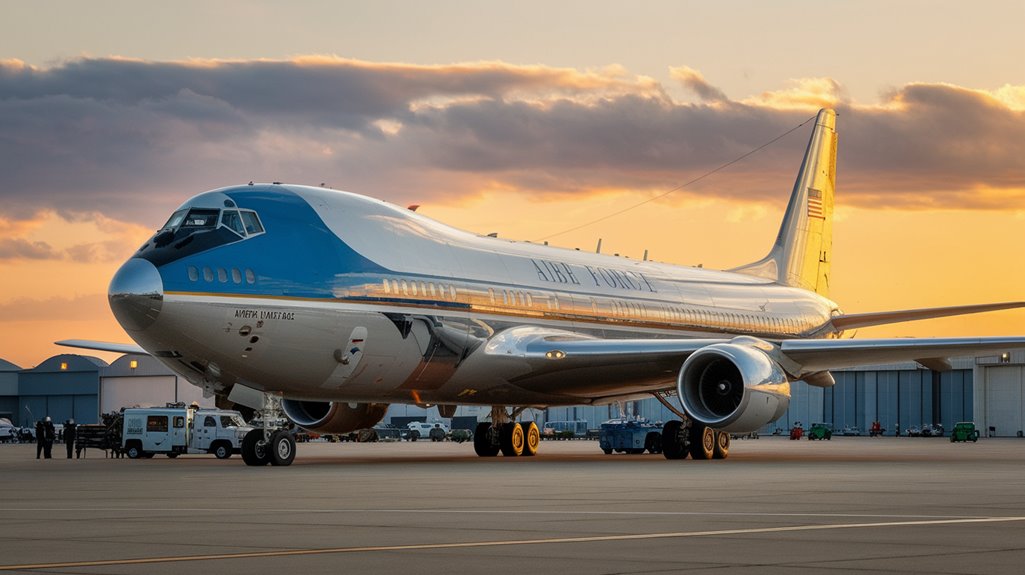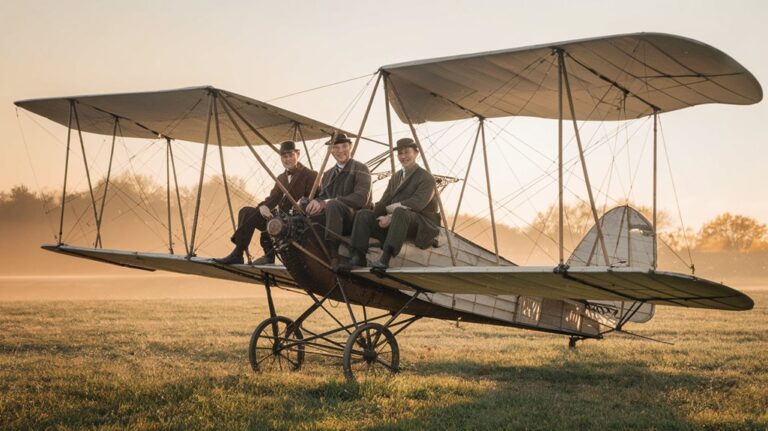Any Plane Carrying the President Is Called Air Force One
You might think that Air Force One refers to a single, specific aircraft, but you'd be surprised to learn it's actually a call sign for any Air Force plane carrying the U.S. President. This unique designation, established in 1954, emerged from a need to avoid confusion when the president's aircraft shared similar flight numbers with commercial planes. While the iconic blue and white 747 might be the most familiar version, several different aircraft have served under this prestigious title.
The History Behind the Presidential Call Sign
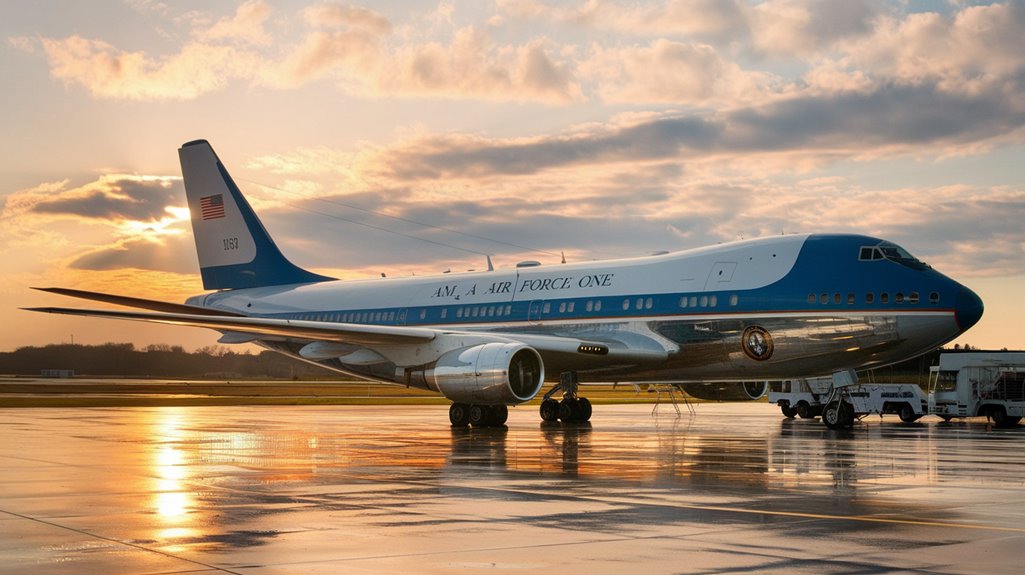
While today we instantly recognize "Air Force One" as the president's plane, this iconic call sign emerged from a potentially dangerous mix-up in 1954.
During a flight carrying President Eisenhower, his aircraft's flight number (Air Force 8610) conflicted with Eastern Airlines Flight 8610 in the same airspace over Richmond, Virginia.
This close call prompted Eisenhower's pilot, Col. William Draper, to create a unique identifier for presidential aircraft. Prior to this incident, the president flew in a modified C-54 Skymaster that served as the first dedicated presidential aircraft. The plane included a special elevator system to accommodate President Roosevelt's wheelchair needs.
The call sign origins can be traced to a meeting where Draper established "Air Force One" to immediately identify any Air Force aircraft carrying the president.
The first presidential aircraft to use this designation was Columbine II, a Lockheed Constellation VC-121-A, marking the beginning of a new era in presidential travel identification.
Inside the Flying White House
Every inch of Air Force One serves an essential purpose, transforming a modified Boeing 747 into a fully operational command center at 40,000 feet.
You'll find three decks equipped with luxury amenities, including a presidential suite with a queen-sized bed at the front for quick emergency exits. Due to national security concerns, many specific interior details remain classified and confidential. The aircraft features four GEnx-2B67 engines that deliver improved thrust and fuel efficiency. The onboard staff operates from two galleys capable of feeding 100 people, while a medical suite stands ready for emergency surgeries.
The aircraft's middle deck features a conference room, dining area, and press section with comfortable seating.
You're protected by state-of-the-art security measures, including electromagnetic shielding and secure communications equipment.
The new VC-25B model enhances these capabilities with touch-screen technology in the conference room and advanced medical facilities that can stabilize patients mid-flight.
Security and Defense Capabilities
The extensive security features aboard Air Force One go beyond its luxurious amenities to create a virtually impenetrable flying fortress.
You'll find advanced defense technology integrated throughout the aircraft, from electronic countermeasures that jam enemy radar to sophisticated missile defense systems. The plane's body is reinforced with armor plating, while its windows are specially hardened for protection. The windows feature wired mesh shielding to prevent radiation exposure in case of a nuclear attack.
The aircraft's security protocols are equally impressive. It's equipped with secure communication systems that are shielded against electromagnetic pulses and unauthorized access. The plane can serve as a military command center during national emergencies.
When you're aboard, you're protected by multiple layers of defense, including flares to counter heat-seeking missiles and chaff to evade radar-guided threats.
The Presidential Airlift Group maintains strict operational procedures, ensuring the aircraft lands only at secure military bases while maintaining a protective airspace bubble around it.
Mission Planning and Support Operations
Planning presidential flights aboard Air Force One demands meticulous coordination between multiple military units and advanced mission systems.
You'll find the 89th Airlift Wing at Andrews Air Force Base managing these complex operations while facing unique logistical challenges. The wing maintains 17 special aircraft for these critical missions.
The Air Force is streamlining mission coordination through its new Joint Open Mission Systems Core Mission Planning software, which will replace the older Joint Mission Planning System by 2027. This advanced system features tailored planning sessions that incorporate squadron and user preferences for more efficient operations.
This system integrates with JADC2 to enhance data sharing across platforms.
Every three to six hours, the Joint Air Operations Center conducts mission planning briefings, involving maintenance teams, intelligence units, and support functions.
Mission commanders use teleconferencing and networked systems to develop detailed flight plans, while data transfer modules allow for last-minute updates to guarantee seamless presidential travel.
Next Generation Presidential Aircraft
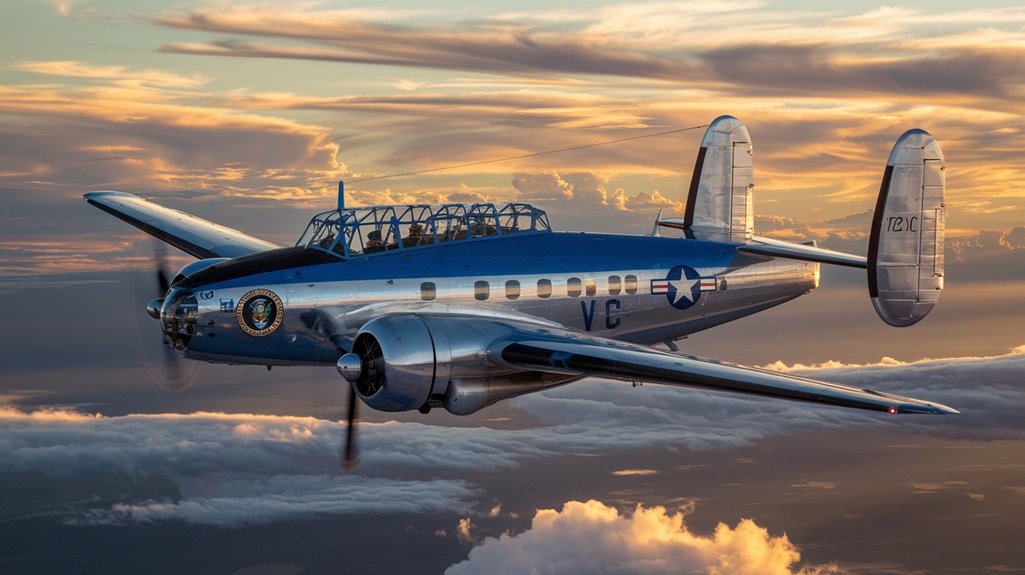
Building on decades of presidential air travel experience, America's next Air Force One fleet marks a significant advancement in aviation technology. The future innovations include two Boeing 747-8s designated as VC-25Bs, featuring enhanced security measures and cutting-edge digital systems. The maximum speed reaches 630 miles per hour at operational altitudes up to 45,100 feet.
You'll find aircraft sustainability improvements through new GEnx-2B67 engines that deliver better fuel efficiency and reduced noise levels.
- A state-of-the-art medical suite functions as a flying trauma center, complete with surgical capabilities and all-encompassing pharmacy.
- Advanced cybersecurity measures protect against digital threats, while EMP hardening safeguards critical electronics.
- Secure satellite communications and upgraded avionics transform the aircraft into a mobile command center.
Though delayed until 2027 and exceeding initial budget projections, these technological improvements guarantee presidential air travel remains at the forefront of aviation excellence.

